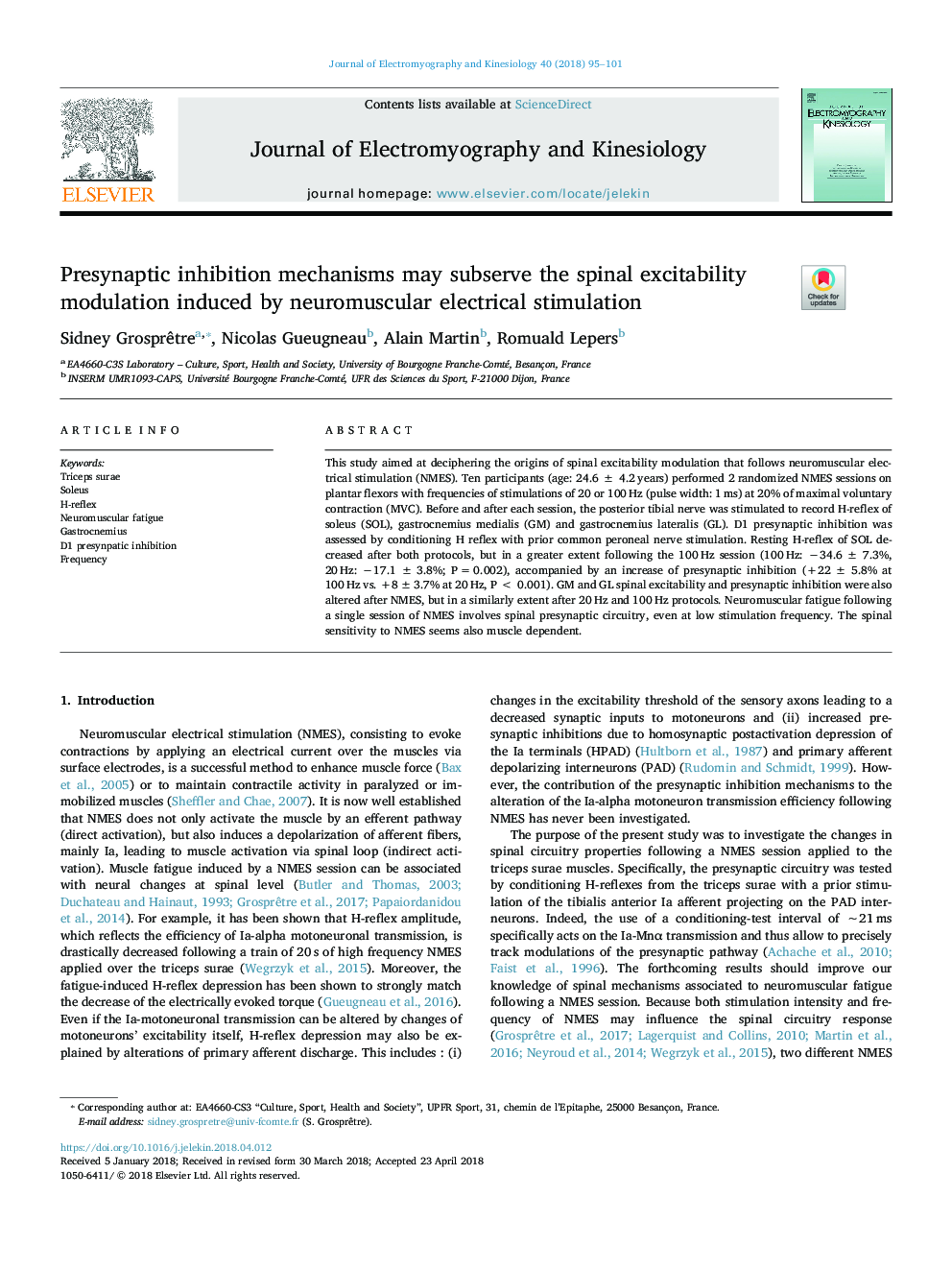| Article ID | Journal | Published Year | Pages | File Type |
|---|---|---|---|---|
| 8799769 | Journal of Electromyography and Kinesiology | 2018 | 7 Pages |
Abstract
This study aimed at deciphering the origins of spinal excitability modulation that follows neuromuscular electrical stimulation (NMES). Ten participants (age: 24.6â¯Â±â¯4.2â¯years) performed 2 randomized NMES sessions on plantar flexors with frequencies of stimulations of 20 or 100â¯Hz (pulse width: 1â¯ms) at 20% of maximal voluntary contraction (MVC). Before and after each session, the posterior tibial nerve was stimulated to record H-reflex of soleus (SOL), gastrocnemius medialis (GM) and gastrocnemius lateralis (GL). D1 presynaptic inhibition was assessed by conditioning H reflex with prior common peroneal nerve stimulation. Resting H-reflex of SOL decreased after both protocols, but in a greater extent following the 100â¯Hz session (100â¯Hz: â34.6â¯Â±â¯7.3%, 20â¯Hz: â17.1â¯Â±â¯3.8%; Pâ¯=â¯0.002), accompanied by an increase of presynaptic inhibition (+22â¯Â±â¯5.8% at 100â¯Hz vs. +8 ± 3.7% at 20â¯Hz, Pâ¯<â¯0.001). GM and GL spinal excitability and presynaptic inhibition were also altered after NMES, but in a similarly extent after 20â¯Hz and 100â¯Hz protocols. Neuromuscular fatigue following a single session of NMES involves spinal presynaptic circuitry, even at low stimulation frequency. The spinal sensitivity to NMES seems also muscle dependent.
Related Topics
Health Sciences
Medicine and Dentistry
Orthopedics, Sports Medicine and Rehabilitation
Authors
Sidney Grosprêtre, Nicolas Gueugneau, Alain Martin, Romuald Lepers,
